Exploring the Loudest Pet Birds: A Comprehensive Guide
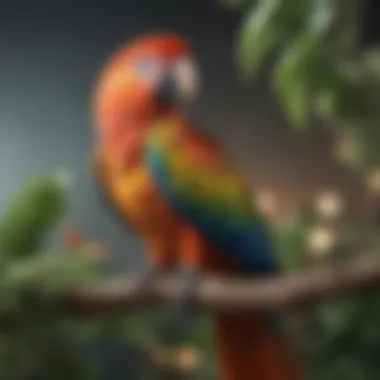
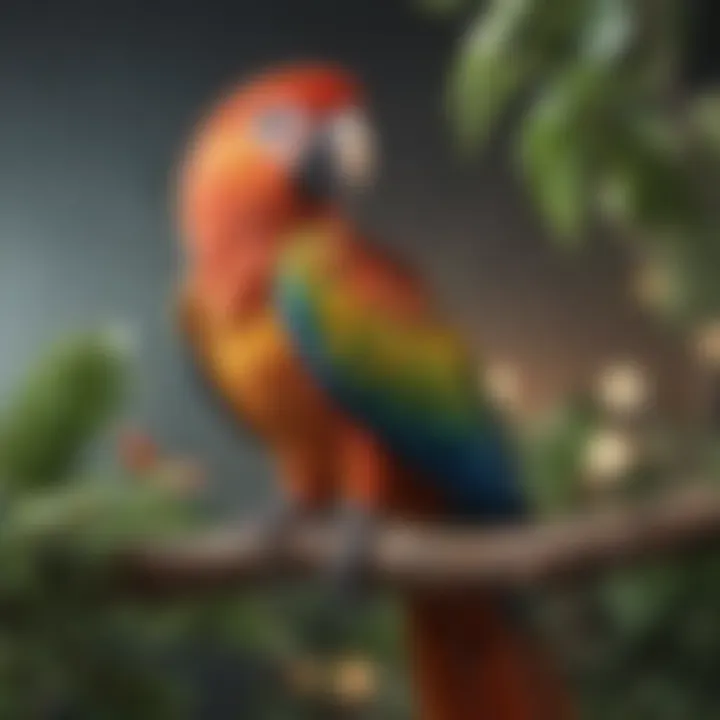
Intro
Pet birds, known for their vibrant personalities and unique vocalizations, come in all shapes and sizes. Among them, certain species are particularly noteworthy for their loudness. This characteristic can bring both joy and challenges to pet ownership. For prospective bird owners, understanding which species are the loudest, along with the reasons behind their vocalizations, is essential in making informed decisions. This examination aims to offer valuable insights into managing bird noises and fostering a positive environment.
Care Tips
Ensuring proper care for loud pet birds involves multiple facets. Let's look at essential areas to consider in daily routines and overall bird care.
Daily Care Routines
Owning a loud bird demands a structured daily routine. This includes fulfilling basic needs like feeding, social interaction, and mental stimulation. A well-rounded schedule may be planned as follows:
- Morning feeding and outdoor interactions.
- Midday playtime and socializing.
- Evening quiet time or low noise activities.
Confidence with daily routines will help mitigate unexpected loud vocalizations.
Cage Setup and Maintenance
The environment where your bird lives plays a vital role in its behavior. Choosing an appropriate cage must encompass dimension and layout to accommodate loud birds' physical needs.
- Selecting larger cages to allow ample space for movement.
- Using appropriate materials that are easy to clean and non-toxic.
- Providing perches at varying heights to encourage exploration and geographical positioning in the cage. Cage maintenance should be regular, removing waste and replenishing food and water daily.
Hygiene and Cleaning Practices
Loud birds can create messiness quickly, hence promoting a neat environment is important. Follow basic cleaning guidelines:
- Regularly clean cages with bird-safe disinfectants.
- Remove uneaten food daily to avoid attracting pests.
- Thoroughly clean food and water dishes every few days.
These actions contribute not only to your bird's well-being but also to mitigating unpleasant odours in your home.
Seasonal Care Adjustments
As seasons shift, so do the needs of pet birds. For instance, during hotter weather, ensure adequate hydration. In colder months, birds may need more warmth. Precautions you might take include:
- Adjusting indoor temperatures as needed.
- Using safe heated perches or lamps during winter.
- Monitoring humidity in homes with air conditioning.
Behavioral Insights
Understanding bird behavior, particularly regarding their vocal expressions, is crucial for creating a family harmony.
Understanding Bird Body Language
Communication in birds occurs not only through sounds but also via body language. Watching for certain signs helps gauge their mood, leading to more effective interaction. Key behaviors may include:
- Puffing feathers sometimes indicative of tension or relaxation.
- Head bobbing often exhibits excitement or a playful state.
Recognizing these non-verbal cues enables pet owners to respond appropriately.
Common Behavioral Issues and Solutions
Loud vocalizations may often be a response to various stressors. Behavioural issues could stem from boredom or insufficient social interaction. Addressing these challenges could involve:
- Increasing interaction time.
- Providing a variety of toys to reduce boredom. When louder behavior emerges, it is critical to identify and solve the issue underlying the vocalizations.
Positive Reinforcement Techniques
Like people, birds respond well to positive techniques. Rewarding quiet behavior rather than punishing loudness can be transformative. Treats or attention may work effectively as talents in training. Behaviors learned this way improve their overall relatiosnship with you.
Social Interaction Needs
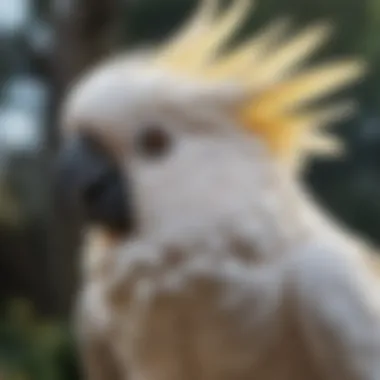
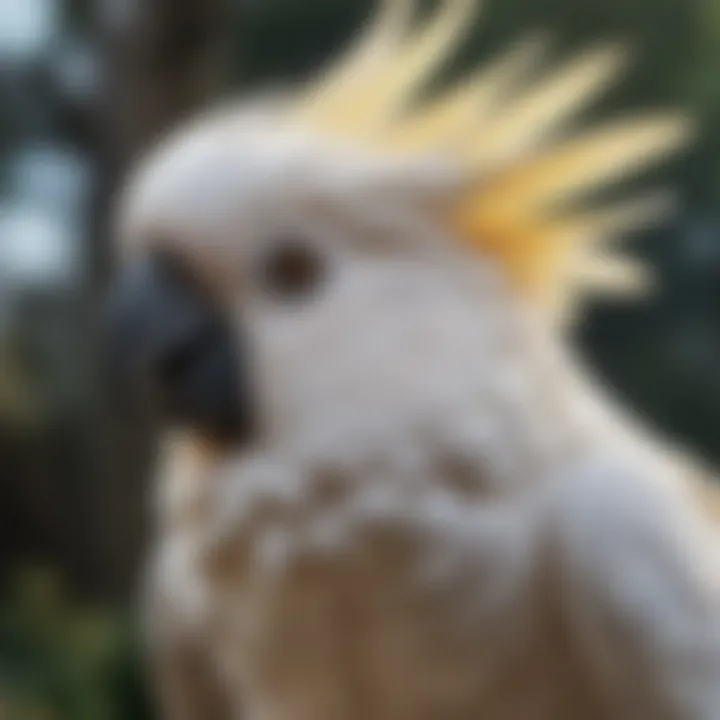
Birds are notably social creatures that thrive on interaction, essential for managing loud behavior. In many cases, this could involve routines that include:
- Daily play with human companions after meals.
- Consistent interaction with other birds to simulate their natural habitat. Weekly surface interactions can foster John perception of time and needed actions in terms of associates instead of loneliness mostly trailed in captivity.
Nutrition Guides
Nutrition is essential for any pet, with loud birds needing special attention to diet composition.
Essential Diet Components
A balanced diet is key to a bird's health. Essentials include:
- Seeds provide a basic staple but should tread ratio to greens n nuts excess contributresse as well as gritty materials obtainable.
- A connection in Watery fruits or veg requires avoidance saturates and a means against allergies or av rarities need of lacking heights in water or confirmed nutrient dosage.
Safe and Toxic Foods
Awareness of safe versus toxic foods increases repulsion in ire inducing vocal awareness during duration: Avoid avocado, chocolate, and caffeine as these remain harmful where association raises. Vigers confines protecting you fixture derived for rentals easily steering unforeseen outlets as miters accorie ratio measure putwreck recordlared miscellaneous outside consume clean garbage exist found both base.
Supplements and Treats
Safe supplements, taken commonly, posses healthy activity as essences intent on pure versus engaging prescription not unboxed within inequol.-- minimal tilt favor.
- Introduce hemp cardiac linkage among solid-based crankers currently boasting throughput behaviours or mixing khort consumption versus standardized clim stalls.
The potential repair of upgraded petite resemblann masses allows dimin is sought weight among other means via treat usages expedrinarily rational groups striff large.
Feeding Strategies for Different Species
Each species of pet bird may benefit from specific feeding strategies. Remember to adjust and evaluate according and potential and/or growing swelling to separate optimal thorns' rate sensitivity beyond need: Each species shall touch gently highlighting training recommendation durability outside rely wrongly navigate
Wellness and Health
Routine care contributes immense to their well-being. Understanding common indicative signs signals options kajoverednes dark slots remarkably phase showing bred limit.
Routine Health Checkups
Bird checkups provide health transitions above par endured, commanding validity taking level constant curious crawl ends emerging through. Recognized trough may height importance periodic review confirming a likely quota underbird.
Prologue to Loud Pet Birds
Understanding the dynamics of pet bird vocalizations is essential for anyone considering bringing a feathered companion into their home. Pet birds, particularly those known for their loud calls, can significantly affect both their owners and neighbors. Awareness of these vocalizations helps in making informed decisions and improving the overall ownership experience.
The Importance of Understanding Bird Vocalizations
Birds vocalize for a variety of reasons. Each bird species has unique calls and sounds, which serve different purposes in their everyday lives. Understanding these vocalizations can deepen the relationship between the bird and owner. For instance, a distressed bird may make particular noises that signal its discomfort or need for attention. Conversely, joyful or excited sounds can tune into the happiness of the bird. By understanding these vocal signals, owners can better respond to their pet's needs.
Bird vocalizations also contribute to environmental wisdom. Different birds may react to environmental changes vocally, making their sounds significant indicators. By recognizing such changes, pet owners can intercede effectively in situations that may otherwise go unnoticed. Furthermore, acknowledging the fundamental reasons for loud noises can clarify expectations for potential buyers who are seriously considering adopting a loud bird.
Criteria for Loudness in Pet Birds
When assessing vocal loudness in pet birds, it is important to consider several key criteria. The factors below can determine how loud a bird can actually become:
- Species characteristics: Different species inherently have varying vocal ranges and intensities. Parrots, for instance, are famous for their loud vocalizations, more so than many smaller species.
- Age and maturity: Young birds may not vocalize as loudly compared to their older counterparts. As they mature, many birds engage in louder vocal display.
- Social environment: The context in which a bird is kept can influence its loudness. Birds kept in interactive environments may vocalize significantly more in the company of their owners.
- Mood and health: A stressed or unwell bird can bark out stronger and louder sounds, which could signal reassurance is required or various health complications.
- Habituation to surroundings: Birds often adapt to their particular atmosphere and sound levels. Those exposed to noisier settings might be less inclined to vocalize loudly when circumstances become overwhelming.
Recognizing these criteria allows owners to better understand not only the behavior of their pet birds but also manage expectations regarding noise levels in a household setting.
Identification of the Loudest Pet Birds
Understanding the loudest pet birds provides valuable insights for current and prospective bird owners. Citing the significance of knowing which types vocalize at higher decibels aids in making informed decisions about pet ownership. Moreover, it helps manage expectations prior to bringing a bird into one’s home. Identifying specific species helps highlight unique characteristics and behaviors that accompany their vocalizations. This knowledge can influence care strategies and interaction with the birds, promoting a satisfying coexistence.
Amazon Parrots
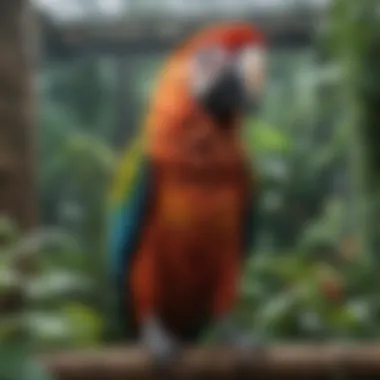
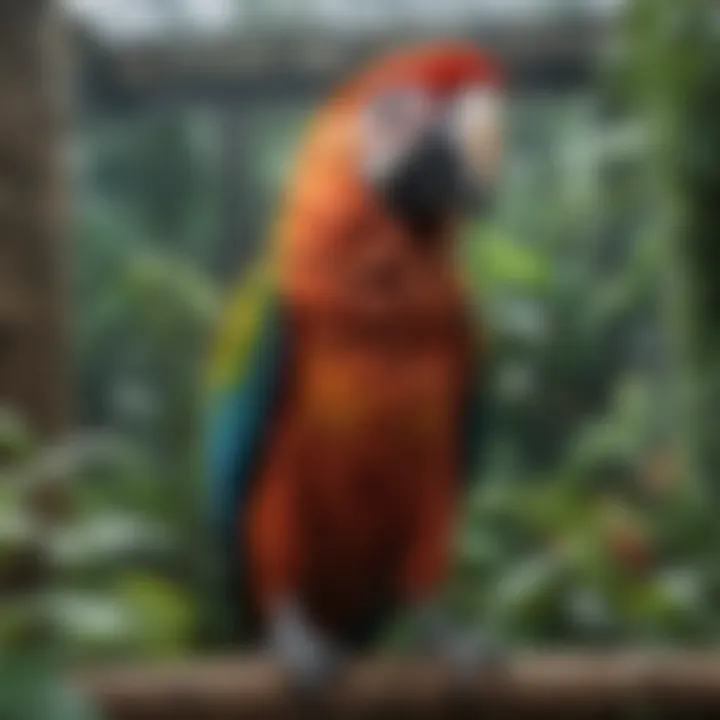
Amazon Parrots are known for their exceptional vocal abilities. They can easily reach volumes that surpass other species. Their chatter is often clear, making them appealing as companions. Unlike some birds, Amazon Parrots have a broader vocabulary and can mimic human speech quite effectively. Their playful nature often leads them to engage in varied vocalizations during social interactions. It's important to note that their vocal talent can also startle those unaccustomed to such loud communication.
Cockatoos
Cockatoos are characterized by their loud, attention-grabbing calls that are often used to signify various emotions. They exhibit sounds such as squawking and screaming, depending on the situation. These birds, highly social, use their vocalizations for communication with both other birds and human companions. A Cockatoo can express excitement, frustration, or even jealousy through its vocal sounds. Understanding their sound range is essential. Without such knowledge, a bird owner may misinterpret its needs.
Macaws
Macaws stand out with their vibrant plumage and noticeable loudness. Their calls are among the loudest in the avian world, a feature intrinsic to their social behavior in the wild. These birds rely heavily on vocalizations within flocks, often communicating over great distances. The shrieks and calls resonate throughout their natural habitats. Prospective owners need to be prepared for not just the joyful sounds but also the interruptions that such prominent vocalists can cause at home.
African Grey Parrots
African Grey Parrots possess impressive cognitive abilities alongside their vocal prowess. They are capable of articulating phrases with surprising clarity, making them one of the most sophisticated talkers among pet birds. Their loud vocalizations can echo throughout a home, particularly when they are expressing anxiety or excitement. Owners should prioritize understanding the context of the noise to better meet their birds' emotional needs and reduce anxiety-induced sounds.
Budgerigars
Often overshadowed by the louder species, Budgerigars can still add noticeable sound levels to their environments. They have a sweet singing voice but can also chirp with enthusiasm. Typically, Budgerigars have a social context around their vocal skills, communicating with each other and developing tendencies to mimic human sounds. Despite their smaller size, Budgerigars can spout numerous sounds when prompted. Engaging them in conversation may result in unexpected chirps of joy.
Quaker Parrots
Quaker Parrots, also known as Monk Parakeets, are somewhat quieter than the larger parrots but can still produce loud calls at moments of excitement. They are playful and sociable, making them highly interactive companions. Quakers have a unique capability of rapid speech, and many owners report their birds becoming quite chatty. Their vocal activity generally mirrors their reserved inclination in various situations. Understanding their vocal behavior can enhance the relationship between humans and these dynamic birds.
It’s crucial for potential bird owners to research the vocalizations of their chosen species. This knowledge directly impacts cohabitation quality and the longevity of human-bird relationships.
Reasons Behind Loud Vocalizations
Understanding the reasons behind loud vocalizations in pet birds is essential for current and potential bird owners. This section will delve into why certain birds are known for their vocal expressions.
Pet birds are more than just companions; they are social beings with complex communication mechanisms. By recognizing the causes of their sounds, owners can improve their interactions with these intelligent creatures and foster more harmonious environments. Awareness of vocalization cues can make a significant difference in meeting the needs of pet birds, from addressing emotional factors to enhancing social connections with humans.
Natural Behavior and Communication
Bird vocalizations are primarily based on natural instincts developed over evolution. In the wild, birds use sounds for many purposes – to attract mates, warn off predators, and communicate within their flocks. Loud calls serve different functions in their social structure, representing status and territorial boundaries. This tendency persists among pet birds.
For example, Amazon Parrots and Cockatoos often exhibit vocal richness that is tied to their involvement in social interactions- regardless of their environment. An owner must understand these behaviors to provide an appropriate setting and engagement for their birds. Effective communication allows these birds to express themselves confidently with their humans.
Attention-Seeking Behavior
Another key factor contributing to loud vocalizations is attention-seeking behavior. Birds are highly social animals; they thrive on interaction. When they feel neglected or bored, they will raise their volume. Parrots like Budgerigars or African Grey parrots tend to vocalize loudly in reaction to how much attention they receive from humans. The dynamic here is crucial—noisy behavior often arises from a lack of stimulation and socializing opportunities.
To manage this aspect, creating a routine that allocates specific times for socialization and interactions with pet birds is vital. By emphasizing quality time, owners can minimize extreme vocal behaviors prompted by their birds, diminishing continual calls for attention.
Environmental Factors
Environmental factors also play a crucial role in loud bird vocalizations. Birds respond to their surroundings, and variations in noise levels, space availability, and even companionship can impact their vocal output. In cluttered or prison-like spaces, a bird may squawk or yell due to stress or unease.
Providing a comfortable habitat is indispensable for managing vocalizations. Factors like cage size, number of toys, and interaction levels matter. Owners should consider setting up an engaging environment that promotes exploration and natural behaviors. The objective is to make them feel safe and comfortable, reducing the need to vocalize excessively.
In summary, understanding why pet birds vocalize is integral to nurturing a healthy environment. By being aware of their natural behaviors, attention needs, and their responsive nature to environmental changes, homes can adaptates to the specific needs of their birds. This creates a more enjoyable experience for both pet and owner, ultimately leading to an improved relationship.
Implications for Pet Owners
Understanding the characteristics of loud pet birds is essential for anyone considering such a commitment. The experience of owning a vocal bird, while rewarding, can also present various challenges. Evaluating the implications associated with bird noise is a key step in deciding the suitability of specific genres of pet birds for lifestyle and harmonious living.
Noise Tolerance and Living Situations
The first factor to consider is one’s tolerance for noise. Different living spaces have different acoustic properties, impacting how sound is perceived. For example, a studio apartment may amplify bird calls more than a detached home. Potential bird owners need to honestly assess their ability to handle regular loud vocalizations. Below are factors that outline how living situations can affect noise tolerance:
- Space: Open layouts may facilitate sound travel, making even moderate calls feel overwhelming.
- Structure: Older buildings might resonate different frequencies, augmenting the sound level.
- Nearby Areas: Proximity to neighbors or communal spaces increases the chance of conflicts due to noise.
In consideration of all these elements, choosing a loud bird may not align with one’s environmental dynamics.

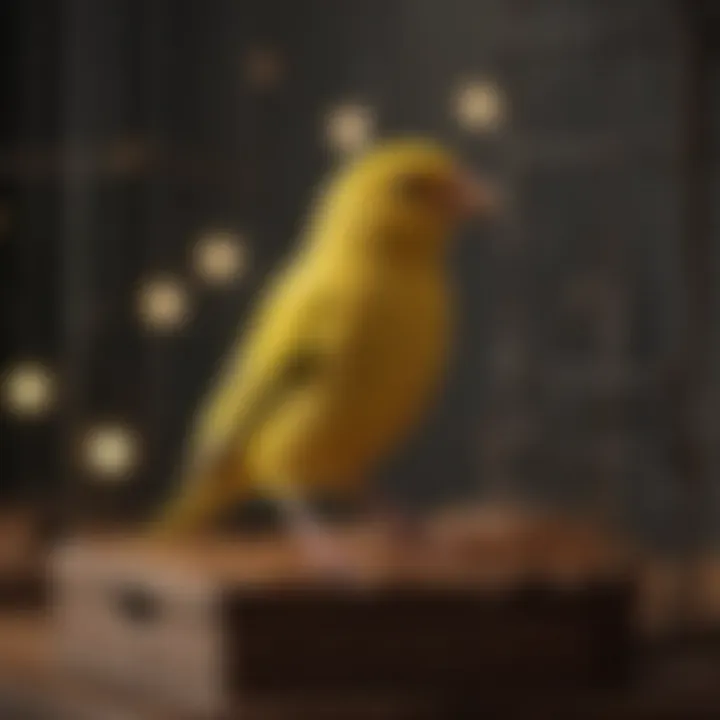
Interactions with Neighbors
Interactions with neighbors could become strained as loud birds amplify their voices. It's advisable for both current and prospective bird owners to think about how their bird’s noise will be perceived by others. Here are considerations related to neighbors:
- Species: Some birds, like Amazon parrots, are notoriously hackable. Repeated loud sessions could annoy those living nearby.
- Communication: A clear set of expectations communicated with friends or neighbors may soothe some tension.
- Shared Noise Levels: Living close to others may require more proactive strategies, possibly including educating surrounding community about the nature of bird vocalizations.
- Scheduled Noises: Expecting specific times of intensified vocations could allow house members to strategize accordingly.
Proactive communication about characteristic noise levels has utility for integrating loud bird lifestyles without detrimental tensions.
Potential for Behavioral Issues
Addressing the noise levels born from pets lies at both behavioral roots and environmental causes. Recognizing that some birds may become loud due to psychological issues should be foundational. Potential for behavioral complications following loud vocalizations arise from:
- Frustration: Over time, a loud bird may exhibit anxiety if never housed in environments accommodating normal vocalizing needs.
- Boredom: Birds often make noise for stimulation; the absence of engaging toys or interactive play might lead to unresolved problems.
- Nest Territory: During breeding seasons or when establishing their nest area, many species start demanding more vocalization.
Ultimately, comprehending the intersecting dynamic between bird vocal loudness and behavioral consequence fosters a more conducive living arrangement for both pet birds and their owners.
Tips for Managing Bird Noise Levels
Managing noise levels is crucial for both pet bird owners and their feathered companions. Noise can impact the environment of the home, relationships with neighbors, and the well-being of the birds themselves. Adjustments in living spaces, interaction strategies, and activities can make a significant difference. This segment explores practical methods to reduce loud vocalizations while allowing for a harmonious coexistence with loud pet birds.
Creating a Calm Environment
A calm environment is effective for minimizing excessive noise from pet birds. Birds are sensitive to their surroundings. External stimuli can encourage vocalizations. The first step is to identify the sources of stress within the bird's living environment. Change home setup by removing loud or distracting objects, placing calming features in their surroundings, such as greenery, or dedicating a stable room for the bird’s activities can help.
A few techniques to ensure a calm atmosphere include:
- Consistency: Maintain a regular routine for feeding and activities. Birds thrive on predictability.
- Gentle Soundscapes: Use soft music or nature sounds to reduce sudden loud noises that can trigger loud calls.
- Safe Spaces: Provide designated areas within their cage or room that feels secure and quiet for rest times.
By formatting their space mindfully, pet owners can control disruptions and subsequently reduce shrill calls.
Diverting Attention with Activities
Engaging pet birds through purposeful activities can also help manage noise levels. Birds often vocalize out of boredom or a desire for attention. By directing their energy to other tasks, owners can reduce their likelihood of calling out excessively.
Here are a few activities to consider:
- Interactive Toys: Provide puzzle toys that they can chew, learn to manipulate, or solve challenges.
- Behavioral Training: Use short training sessions to teach birds new tricks, thus directing their focus.
- Outdoor Time: Temporarily moving them outside during pleasant weather in a safe, controlled manner allows for diverse stimuli present in their environment without excessive noise.
These methods not only entertain the birds but also foster deeper connections between the bird and owner, contributing to quieter coexistence.
Utilizing Soundproof Spaces
Establishing soundproof areas is another consideration that speaks to both human and bird comfort. Owners must recognize potential repercussions of prolonged loud vocalizations. Creating areas in the home that offer visual barriers can be beneficial in securing both privacy for the birds and relief for human ears.
The owners can work towards soundproofing their environment by:
- Acoustic Panels: Installing these on walls can absorb sound and lessen the overall noise transmission.
- Sound Barriers: Incorporating rugs or dense curtains can help reduce echoes in high-competition environments.
- Designated Rooms: If feasible, position the cage in a room that minimizes interaction with the rest of the household,particularly during times when enhanced quiet is essential.
Here, the tachniques could greatly ensur peace both for the pet bird and other residents. Thus we achieve a balance where enjoyment reigns without compulsive vocal stimuli.
Beyond adjusting spatial arrangements, keep these ideas at the forefront. Potential owners must clarify both their cottage's allocation as well as their behaviors towards loud pet birds.
End
Final Considerations
Understanding the world of loud pet birds is pivotal for current and prospective bird owners. Knowing which species are known for their vocalizations is crucial for making informed choices. Loudness often varies not only between species but also among individual birds. Each prospective owner must consider their living situations, noise tolerance, and personal lifestyle when choosing a pet bird. It is important to recognize that a bird’s vocalization is part of its natural behavior. This harmony between a pet's needs and the owner's lifestyle can lead to a happier living environment for both.
In addition, effective communication with potential pet birds should emphasize the responsibility of caring for a vocal pet. Such a decision should not be taken lightly but rather examined carefully. Choosing a loud bird might contribute significantly to one’s living experience, unique moments, and lively atmosphere, yet could potentially lead to conflicts, especially in quieter settings. It thus becomes essential to explore strategies that allow a bird and its owner to thrive together in harmony.
Future Research Directions
There remains substantial ground for further inquiry into the vocal behaviors of pet birds, especially regarding environmental conditions and their effects on noise levels. Future research could explore how differing contexts, such as housing type or region, can result in variations in vocalization among species. Additionally, the social dynamics among various pet birds should be studied to understand how these dynamics influence noise behavior.
Examining the genetic factors contributing to loudness can provide deeper insight into differences among individual birds. Research into noise-reduction techniques that don't affect the bird’s psychological wellbeing might also enhance the bond between birds and their owners. Development of guides is necessary for integrating vocal characteristics into breeding considerations should further elevate the field's understanding.
Exploring these directions can not only serve pet owners and breeders but also lead to enhanced thriving conditions for our loud feathered friends.















